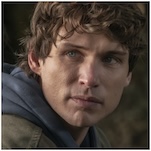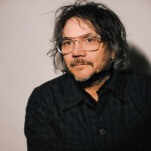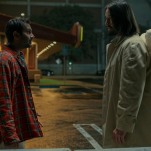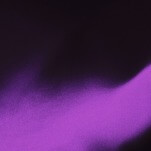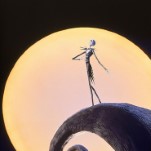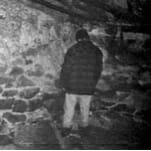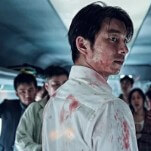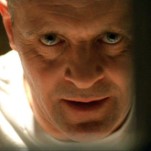The Hanseroth Twins Step Out On Their Own
Photo by Hanna Hanseroth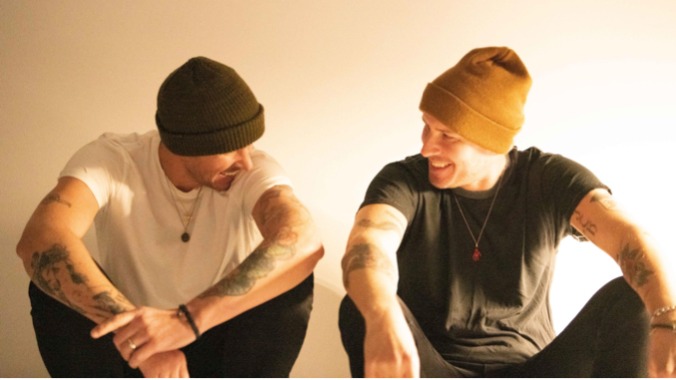
Back in May, Phil and Tim Hanseroth did something they’d hardly done in two decades. They got up on stage at Brandi Carlile’s Mothership Festival in Miramar Beach, Fla., and played and sang songs together—without their third musketeer.
To be clear, the Hanseroth Twins have performed all over the world on some of its biggest stages during that time, from the Grammys to Saturday Night Live, but always backing Carlile as two-thirds of the band that carries her name. And stepping into the center spotlight has been, well, an adjustment.
“I’m very comfortable doing it, but there’s definitely a learning curve to singing lead on a song,” Tim tells me over Zoom from his studio in Maple Valley, Wash., just outside of their hometown of Seattle. “We sing tons of harmony. We’ve been singing together for 30 years. But it’s something different when you’re put in front of a microphone, and it all comes down to you.”
They released their debut album as The Hanseroth Twins, Vera, on Friday, but the collection of 10 songs—mostly acoustic ballads dealing with loss and nostalgia—isn’t their first time out front. Their previous band, the Fighting Machinists, signed to Interscope back in the 1990s. And their musical journey began with an older kid in the neighborhood turning them on to The Ramones after Phil had signed up for a Sub Pop record-of-the-month club and they’d been listening to albums by Mudhoney, Nirvana and Screaming Trees.
“He said, ‘Hey, you got to check out this band,’” Tim recalls. “‘They sound like they’re from England, but they’re from New York.’ He loaned us this cassette tape for about a week, and it was The Ramones. And that moment, it just changed our lives, like, ‘Oh my God, we could be in a band. You almost don’t need to know anything.’ It gave us permission to just do anything we wanted.”
They’d picked up a used guitar for $30 at an auction. “And we saved and saved and saved for a bass,” Tim continues. “Somebody’s got to be the bass player, and I forget how, but that landed on Phil just because we had to have one of us playing bass. We started the band with two other guys in our school who were also like us, just starting out and learning how to play their instruments. We’d get together after school, we’d practice for five hours a day rain or shine. Our neighbors absolutely hated us. And then we kind of did the outlier thing—we put in thousands and thousands of hours and did that for years.”
Eventually they were introduced to Rick Parashar and Jonathan Plum at London Bridge Studio, the Seattle music factory where Alice N’ Chains, Mother Love Bone, Soundgarden, Screaming Trees and Pearl Jam had all recorded albums. The Fighting Machinists put some demos to tape, eventually playing a showcase for Interscope in L.A. and getting a record deal. The band had a short but good run, touring up and down the West Coast.
“We were almost like a Weezer or Foo Fighters, maybe Nirvana,” Tim says. “Just big grimy guitars.”
“Lots of hair, lots of cigarettes, lots of beer, tattoos,” Phil adds, laughing.
One of their fans was a young singer/songwriter named Brandi Carlile. She wasn’t old enough to get into their club shows, so she’d help push in the amps and road cases and just stay for the set, hanging out with the older musicians.
“It just kind of disintegrated in its own natural way—not a terrible way, but just kind of died its own quiet death,” Tim says. “When that band fell apart, I got a phone call maybe like five minutes later, and it was Brandi, and she said, ‘Hey look, I heard you guys’ band is breaking up, and I’m making a record, and I wanted to know if you’d come play on my record.’”
-

-

-

-

-

-

-

-

-

-

-

-

-

-

-

-

-

-

-

-

-

-

-

-

-

-

-

-

-

-

-

-

-

-

-

-

-

-

-

-









